1801 Cane Ridge Revival
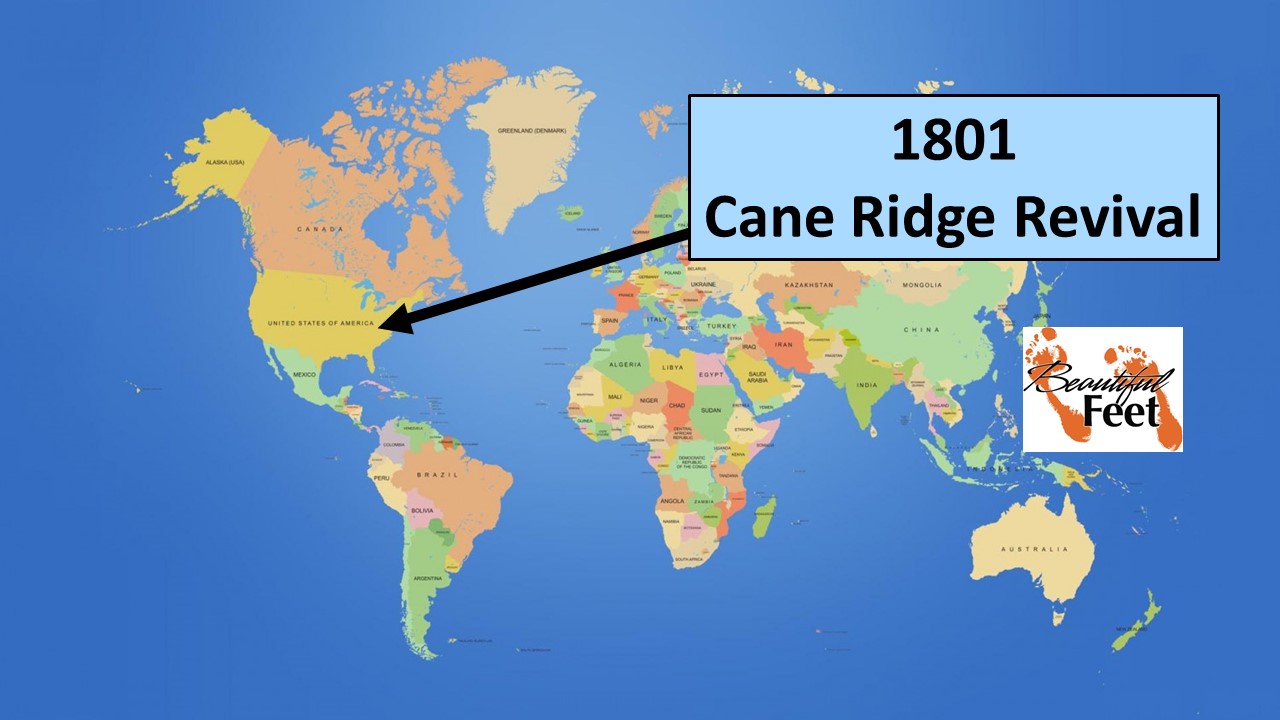
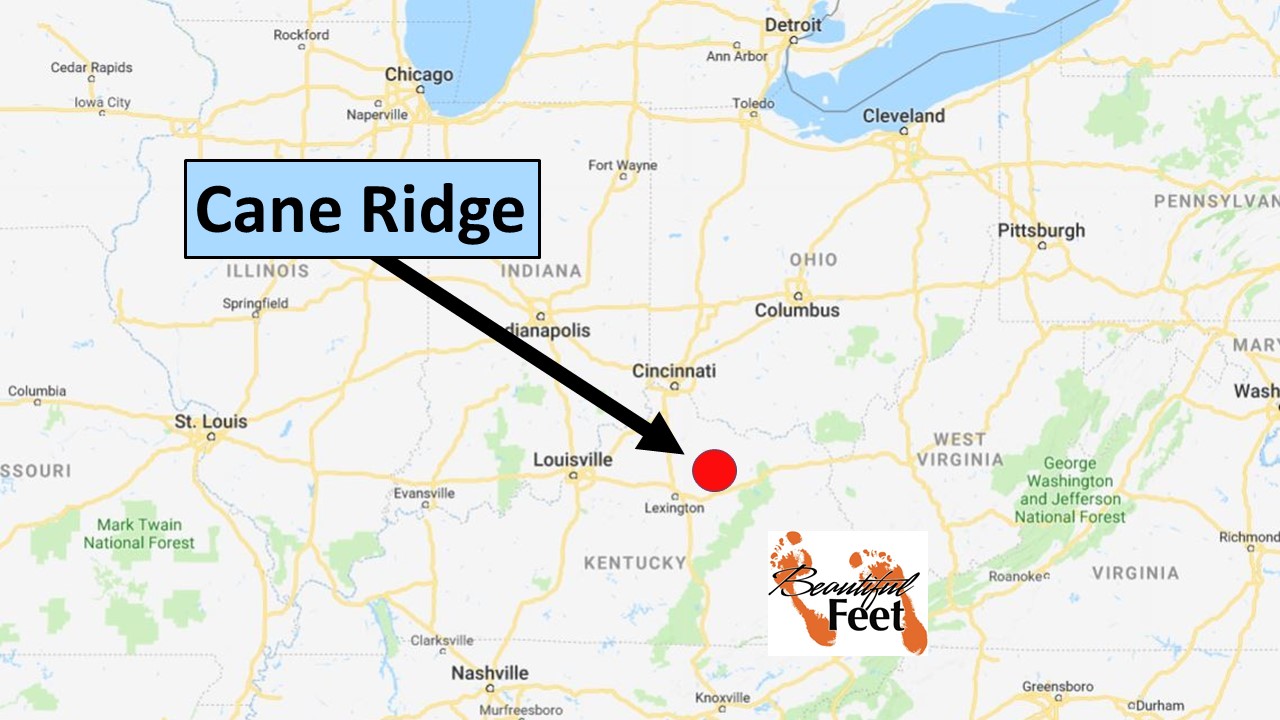
Initial Stages
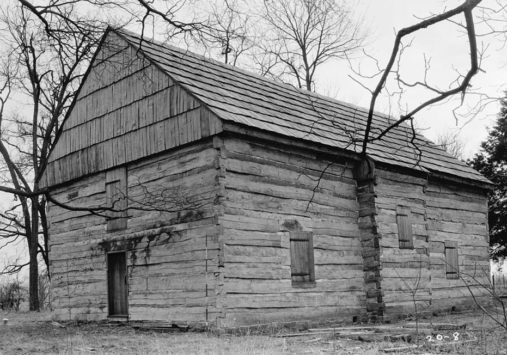
Cane Ridge Meeting House (Then)
►Around the turn of the century a mass migration was taking place of nearly one million people. Pioneers were heading to the western frontiers of Kentucky, Tennessee, Ohio, and Indiana, many of whom were illiterate—never having read a Bible or heard a sermon.
►The Presbyterian minister Barton Stone witnessed the “1800 Revival” at Gasper River, Kentucky, and planned to conduct a similar camp meeting for his churches at Cane Ridge, and Concord, Kentucky, in August of 1801.
►When Stone returned from the 1800 Gasper River camp meeting, he discovered that merely telling the story of what took place brought about manifestations similar to what was experienced at Gasper River.
People wept, groaned, and agonized as they came under awful conviction of their sins. Some fainted and trembled.
 This structure was built over the original building pictured above.
This structure was built over the original building pictured above.
►Because the atmosphere throughout the region was so electrified, other locations began conducting camp meetings prior to the August 1801 camp meeting at Cane Ridge. Below are just a few locations that conducted them and the numbers that were present:
•.Concord, KY—4,000
•.Lexington, KY—6,000
•.Indian Creek in Harrison County, KY—10,000.
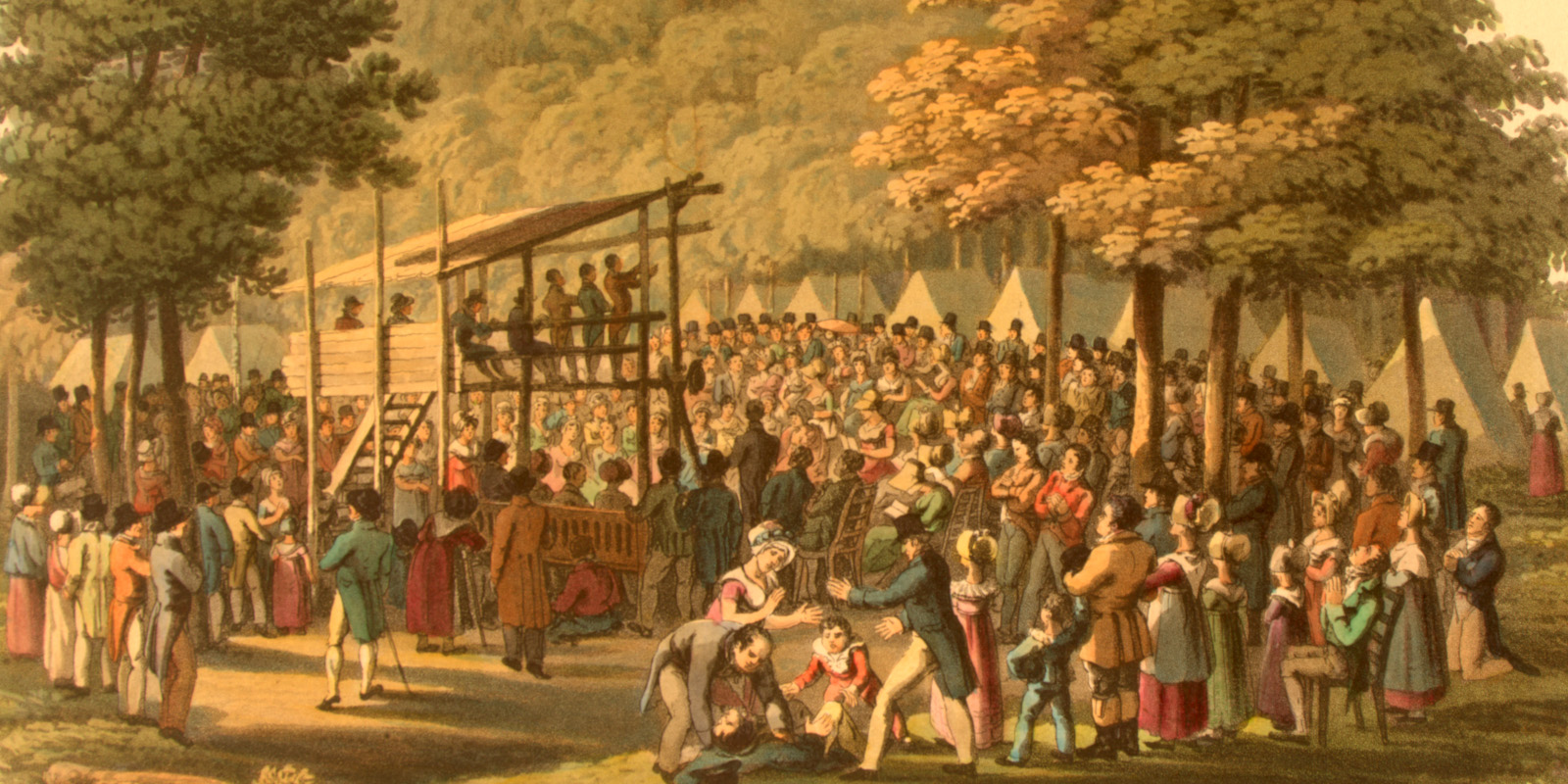 Camp Meeting from that Era (1819)
Camp Meeting from that Era (1819)
What Happened at Cane Ridge
►Communications were sent out concerning the planned camp meeting that was to start on August 6, 1801. These camp meetings followed the Scottish communion pattern of being held on a Friday through Monday (Holy Fair), like what was conducted during the Cambuslang, Scotland, Revival of 1742.
►When the date arrived, reports from various sources estimated the numbers assembled to have reached between 12,500 to 30,000 people. People arrived in wagons from Kentucky, Ohio, and Tennessee. (Lexington, the largest town in Kentucky at the time, had a population under 1,800, and was located 28 miles to the west of Cane Ridge.)
►Denominations having been arranged in different sections of the camp, the Presbyterian, Methodist, and Baptist preachers and circuit riders formed preaching teams, speaking simultaneously in different parts of the camp grounds, all aiming for the conversion of sinners.
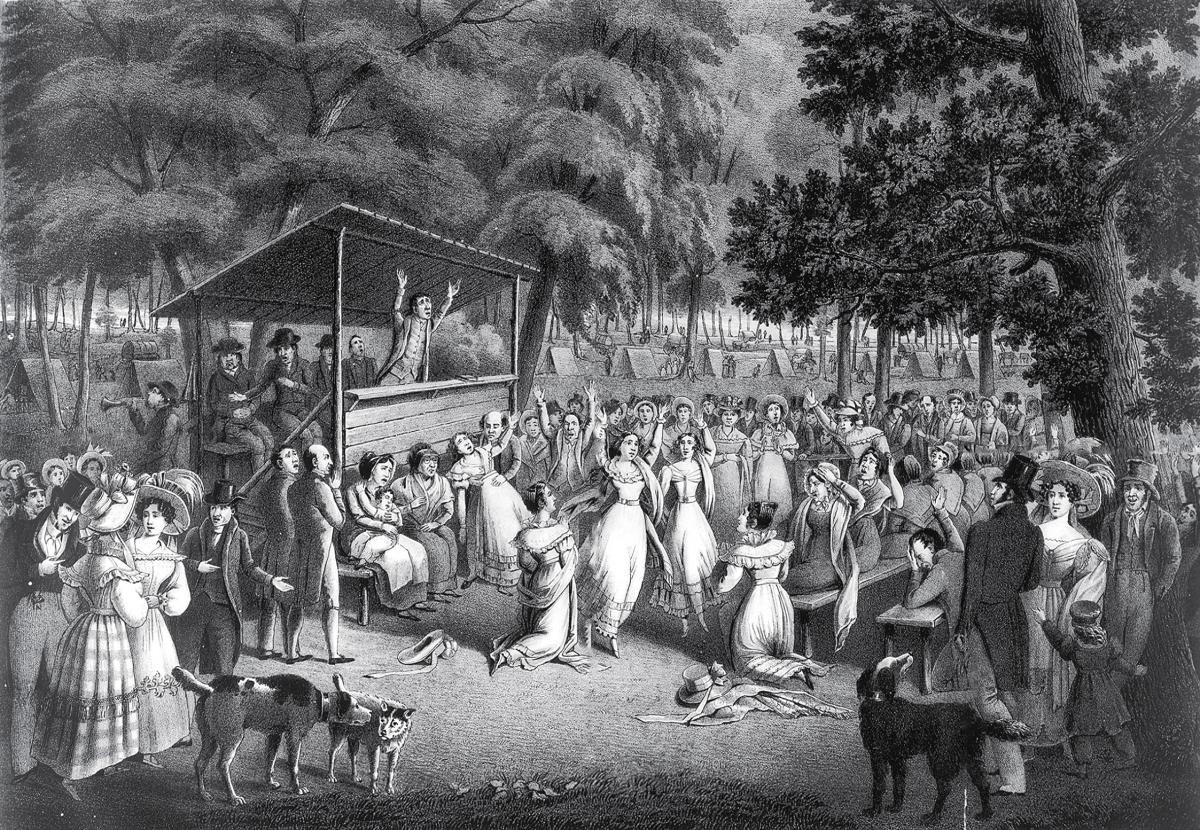
Camp Meeting from that Era (1829)
Testimony of James Finley, who later became a Methodist circuit rider:
The noise was like the roar of Niagara. The vast sea of human beings seemed to be agitated as if by a storm. I counted seven ministers, all preaching at one time, some on stumps, others in wagons and one standing on a tree which had, in falling, lodged against another.
I stepped up on a log where I could have a better view of the surging sea of humanity. The scene that then presented itself to my mind was indescribable. At one time I saw at least five hundred swept down in a moment as if a battery of a thousand guns had been opened upon them, and then immediately followed shrieks and shouts that rent the very heavens.
Testimony of Rev. Moses Hoge:
The careless fall down, cry out, tremble, and not infrequently are affected with convulsive twitchings.
Nothing that imagination can paint, can make a stronger impression upon the mind, than one of those scenes. Sinners dropping down on every hand, shrieking, groaning, crying for mercy, convulsed; professors praying, agonizing, fainting, falling down in distress, for sinners or in raptures of joy!
As to the work in general there can be no question, but it is of God. The subject of it, for the most part are deeply wounded for their sins, and can give a clear and rational account of their conversion.
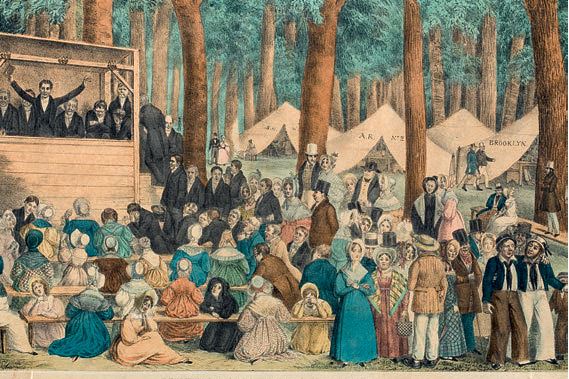 Camp Meeting from that Era (1836)
Camp Meeting from that Era (1836)
Testimony of James Crawford:
The number of persons who fell [under the power of the Holy Spirit], was computed by the Rev. James Crawford, who endeavored to keep an accurate account, at the astounding number of about three thousand.
Testimony of Richard McNemar:
The scene was awful beyond description; the falling, crying out, praying, exhorting, singing, shouting, etc. exhibited such new and striking evidences of a supernatural power, that few, if any could escape without being affected.
Such as tried to run from it [the power and presence of God], were frequently struck on the way, or impelled by some alarming signal to return: and so powerful was the evidence on all sides, that no place was found for the obstinate sinner to shelter himself…
These public testimonies against the work, particularly by ministers, were a means of stirring up and encouraging those who were openly wicked, to come forth and mock, oppose, and persecute; but even such, were often unable to withstand the power, and sometimes in the very act of persecuting and afflicting, were struck down like men in battle; and so alarming was the sight, that others on foot or on horseback, would try to make their escape and flee away like those who are closely pursued by an enemy in time of war, and be overtaken by the invisible power, under which they would be struck down and constrained to cry out in anguish, and confess their wickedness in persecuting the work of God, and warn others not to oppose it.
Children Giving Exhortations
►Children’s exhortations had a powerful affect on the people at Cane Ridge, just like what was experienced the year before during the 1800 Revival.
The exhortations delivered … by small children were so evidential of a divine power, so searching to the conscience, so wounding to the sinner, that the most obstinate unbelievers have fallen down … and confessed that God was in them of a truth.
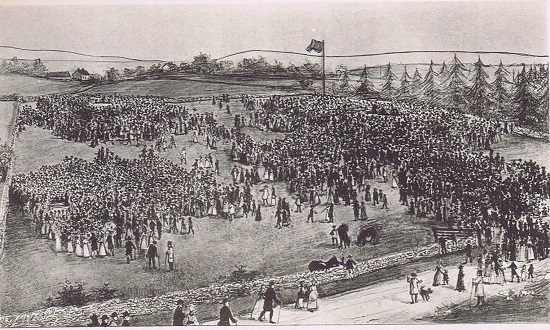
Crowds would gather like in the above picture and multiple preachers would speak from different locations at the same time.
Controversial Jerks (violent shaking of the body)
►Some manifestations of God’s presence were controversial. The most significant was “the jerks.” Here are two responses concerning “the jerks.”
The prolific Baptist writer and co-founder of Liberty University, in Lynchburg, VA, Dr. Elmer Towns, when asked about “the jerks,” responded:
Now historians have said several things. God is so infinite so powerful so large that when the divine fills [sic] on man, man can not contain Him. And man breaks out with God all over the place doing things that he wouldn’t have done otherwise. Such as the jerks, and falling to the ground.
Peter Cartwright—Methodist Circuit Rider—responding to question about “the Jerks”:
I always looked upon the jerks as a judgment sent from God, first, to bring sinners to repentance; and, secondly to show professors that God could work with or without means, and that he could work over and above means, and do whatsoever seemeth him good, to the glory of his grace and the salvation of the world.
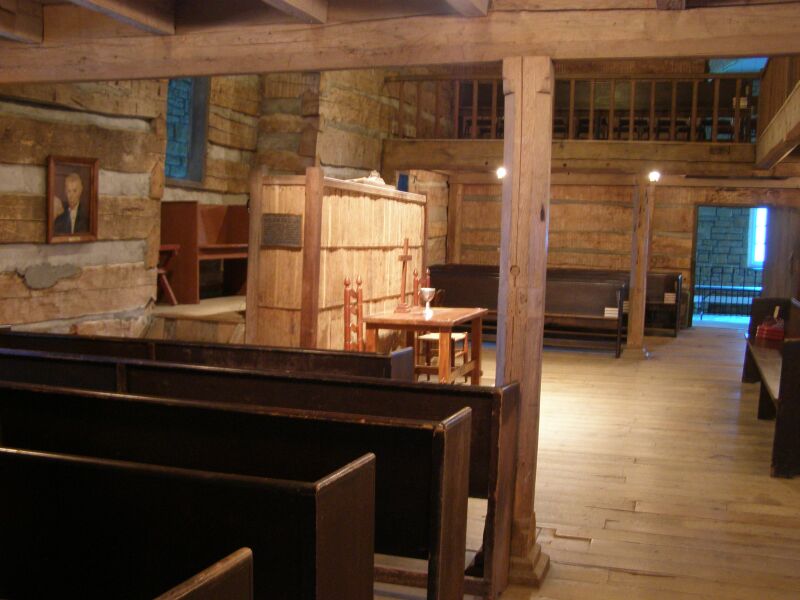
Inside the Cane Ridge Meeting House Today
Results of the 1801 Cane Ridge Camp Meeting
►It impacted the American frontier (Indiana, Ohio, Kentucky, and Tennessee) and major towns & colleges, spreading revival fires everywhere.
►Testimonies of this revival, when told in North Carolina, caused the revival fires to fall there and in surrounding states.
►The Methodists set up camp meetings in Mecklenberg, North Carolina, in March, 1802, and 5,000 were in attendance. These camp meetings were held in South Carolina as well, and by January, 1803, the Methodists had added 3,371 to their membership roles.[54][55][56]
►Cane Ridge Revival was not an isolated incident. Richard McNemar, who was present at the event, quoted from a letter dated January 30, 1801:
The work is still increasing in Cumberland: It has overspread the whole country. It is in Nashville, Barren, Muddy, Gasper, Redbanks, Knoxville, etc.
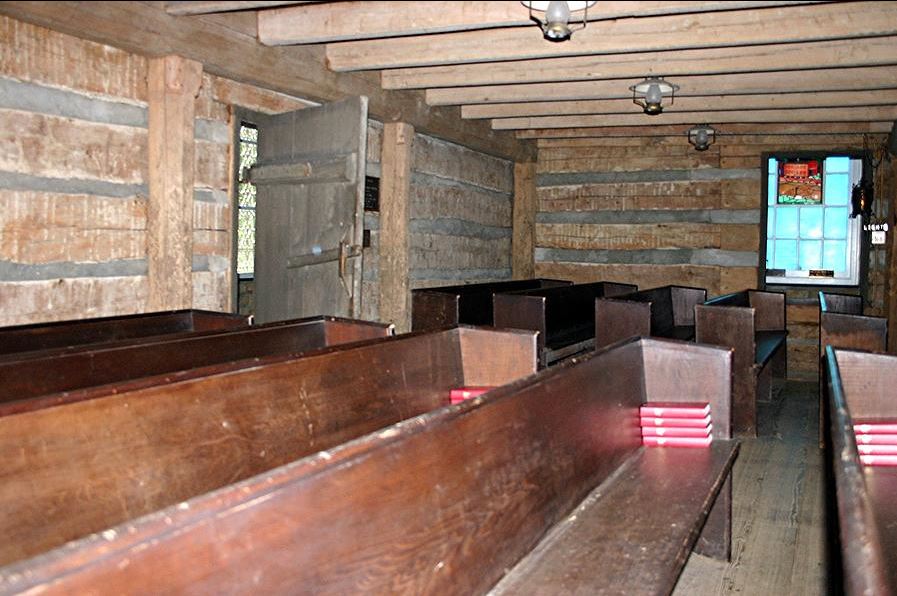
Inside the Cane Ridge Meeting House Today
Sources
- Cane Ridge: America’s Pentecost by Paul Conkin
- Church History magazine, No. 23, p. 26
- Peter Cartwright, Autobiography of Peter Cartwright, The Backwoods Preacher
- Pratney, Winkie. Revival: Its Principles and Personalities,
- Great Revivals and the Great Republic (pub. 1904) By Warren A. Candler
- The Kentucky Revival (Richard McNemar)
- http://www.evanwiggs.com/revival/history/2-1800.html
- https://archive.org/stream/greatrevivalsgre00cand#page/n5/mode/2up
- http://www.therestorationmovement.com/_states/kentucky/stone.htm
- http://www1.cbn.com/700club/cane-ridge
Return to List of Revival Stories
Chet & Phyllis Swearingen:
Office: (260) 920-8248
romans1015@outlook.com
Beautiful Feet
P.O. Box 915
Auburn, IN 46706

